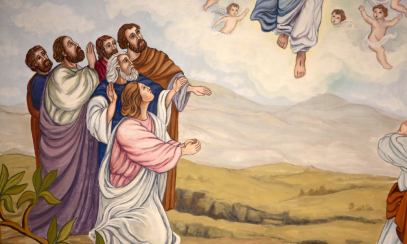
Liturgy: Part 8
What is the Liturgy? An Exploration of the Church’s Public Prayer.
What is the Liturgy? An Exploration of the Church’s Public Prayer.
The beginning of the Easter triduum, or three days, marks the end of Lent. It is not really three liturgies, it is one long liturgy, with some rest breaks. The triduum commences with the Mass of the Lord’s Supper on Holy Thursday evening and ends after evening prayer on Easter Sunday.
Holy Thursday
During the Mass of the Lord’s Supper, we remember Jesus’ last meal with his disciples in a powerful way, re-enacting even the washing of feet. This symbolic gesture of servant-ministry is usually offered by the priest to members of the congregation. Following the Mass, there is a silent eucharistic procession to a chapel of repose, where we remember the Lord’s time in the Garden of Gethsemane, and we wait with him in prayer and adoration. The doors of the tabernacle in the church stand open, so everyone can see that it is empty. The sanctuary lamp is extinguished.
Good Friday
On Good Friday, there is no Mass anywhere in the universal church. We can participate in a variety of services by which we remember Jesus’ suffering and death on the cross. Churches offer the Stations of the Cross, the Liturgy of Good Friday, and sometimes a Tenebrae service. During the Good Friday liturgy, we listen to a dramatic reading of the Passion, venerate the cross with a touch or kiss, and receive Communion from reserved consecrated hosts. Again, we depart in silence. If the parish has a Tenebrae “darkness” service, it is held at night. The seven last words of Jesus are spoken, with a candle extinguished at each one. It is a powerful and moving experience of the need for the light.
Easter Vigil
The most beautiful Mass of the entire year occurs on Holy Saturday night, at the Easter Vigil. The Mass begins after dark with the blessing of new fire, the lighting of the paschal candle and a candlelit procession into the church. The Exultet, a history of salvation, is chanted and we listen to readings from the Old and New Testaments that reflect that history. There may be as many as nine readings, followed by the first singing of the Gloria since the beginning of Lent.
The Easter Vigil includes the baptism, confirmation and first Communion of catechumens who have been preparing for this day for months. We welcome them into our community and celebrate their presence among us.
Although the Easter Vigil can be quite long, it is truly worth spending the time – it is a rich experience of the resurrection of the Lord. And for the first time since Ash Wednesday, we sing Alleluia!
Who’s in the sanctuary?
Ushers:
The ushers are not just the men who collect the money.
They don’t even have to be men! Ushers are ministers of hospitality in the church – ensuring that parishioners have a place to sit, helping those who are in distress, readying the church before Mass, greeting people at the doors – and yes, collecting the offering and often assisting in its presentation by members of the congregation.
Why do we do that?
The Communion procession:
There has been some confusion during the last couple of years about what we’re supposed to be doing as we receive Communion. The most recent translation of the General Instruction of the Roman Missal (GIRM) continues the understanding of our reception of Communion in procession – that is, we all rise and move solemnly to receive the Blessed Sacrament, then remain standing until all have received. In the United States, the bishops have determined that the appropriate gesture of reverence prior to receiving Communion is a bow of the head. This commonality of gesture expresses our unity as we receive the sacrament of unity: Communion. Local bishops have some leeway to allow people to kneel or stand after receiving, prior to the end of the procession.
What’s the season?
What is Advent?:
Advent is the beginning of the church’s year – occurring not in January, but during the four weeks prior to Christmas. Advent begins on the Sunday closest to Nov. 30, the Feast of St. Andrew. We prepare for the coming of Christ in joyful anticipation. In the earliest days of the church, Advent lasted six weeks, until St. Gregory the Great, of calendar fame, fixed the season at four weeks and composed prayers and antiphons to celebrate it. The liturgical color for Advent is purple.
What’s he wearing?
Crosier:
The bishop carries a tall hooked staff called a crosier. In the Western church, it is shaped like a shepherd’s crook to symbolize the bishop’s role as the shepherd of his flock. Crosiers dating from as early as the fourth century have been found in catacombs. By the Council of Toledo in 633, the crosier is mentioned as a liturgical implement.
What’s in the church?
Tabernacle:
The tabernacle is the repository in which the consecrated hosts are reserved for distribution to the sick or other needs of the community. It is prominently displayed in the church, separated from the main altar by architecture, lighting or design. In many churches, it is in a separate chapel where it is still visible in the body of the church. When the Blessed Sacrament is present, a sanctuary lamp burns near it. People often sit or kneel in adoration in front of the tabernacle; the appropriate gesture when approaching or passing in front of it is genuflection.



